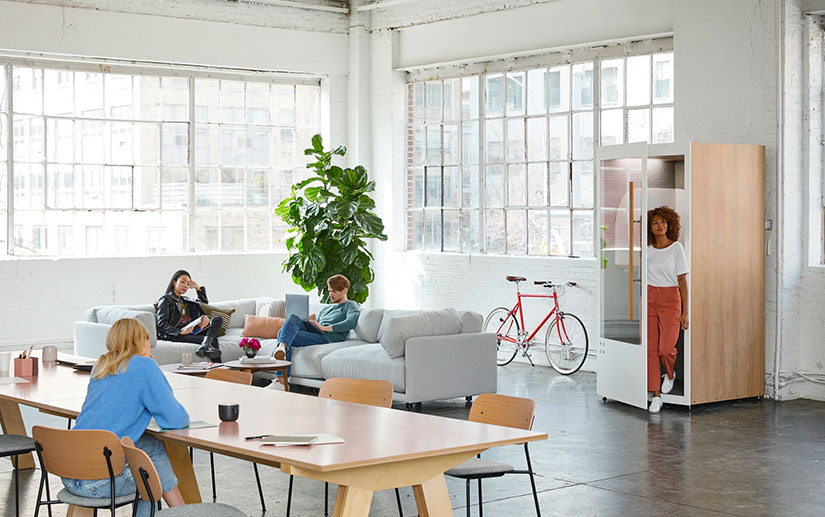The term “wellness” no longer means “not sick” as it did 50 years ago. With the rise of high-end fitness boutiques, stylish athletic wear, health food stores and smoothie and juice shops, wellness is no longer a trend but a booming industry that is now making its way into interior design. According to the Global Wellness Institute, wellness real estate was a $134.3 billion market in 2017, accounting for nearly 1.5% of total annual global construction.
With the popularity of wellness growing, it’s no surprise wellness is also influencing other avenues such as interior design. Wellness design aims to enhance human health and function through design. Interior designers have come to understand that the look and feel of a space can influence moods and affect the way we live our daily lives.
With people spending 90% of their time indoors, smartly designed commercial spaces can help combat burnout by improving the overall well-being of daily lives. Today’s commercial interior designers are tapping into these five wellness design trends to create productive and inviting environments for building occupants.
#1 Biophilic design
Biophilia means a love of nature; in design terms, it equates to bringing the outdoors in. This type of design focuses on our innate attraction to nature and suggests that we all have a connection to the natural world. It seeks to incorporate lush greenery and fresh, clean environments into interiors. Biophilic design has been shown to have environmental, health and economic benefits for both building occupants and urban settings.
#2 Neutral color schemes
Natural color palettes and more neutral palettes are shown to have multiple benefits when used in interior design. While neutral colors have been used for ages for their style and versatility, they can also have the potential to offer wellness advantages. Neutral colors create a sense of calmness and help people feel relaxed. There is a reason why many spas are decorated with a subdued color palette. Soothing neutrals help to develop a cozy atmosphere that acts as a sanctuary from the outside world. The simplicity of natural colors offers balance, taking away everyday stresses.
#3 Natural lighting
Natural light seems to be a new ingredient in wellness. Exposure to the cycles of natural light is a vital aspect in maintaining the proper function of our hormone cycles that regulate metabolism, mood, energy, sleep and overall well-being. If a space has limited access to natural light, designers use artificial light to mimic natural light in order to trigger emotions and boost positive thinking.
#4 Experiential-focused spaces
With many traditional workspaces getting a modern facelift, designers are re-thinking how offices and other rooms are utilized. Spaces for community and activity are becoming more popular. Conference rooms are being used for more than just group meetings. Companies are choosing movable furniture to allow for smooth transitions into space for mixed functions and activities. Commercial kitchens and restaurant-like cafes provide a place for employees to relax and unwind during their lunch break, promoting workplace friendships.
#5 Natural materials
Interior designers are moving away from industrial materials like glass and concrete and opting instead for woods, stone, textured textiles and other natural materials. Using natural elements is key in wellness design to prevent exposure to harmful ingredients such as PVC that can pose serious health risks. Studies show that natural materials can even have a positive effect on occupants’ mental health.
Interior design for offices and other commercial space
With the rising popularity of green building architecture, it’s easy to see why building owners are seeking to extend the similar principles into their building interiors. Bobbitt Design Build’s professional interior designers are ahead of the curve in bringing wellness design into buildings in artful and practical ways. We strive to create the look and feel our clients are seeking, not only on the outside of your building but the inside as well.


